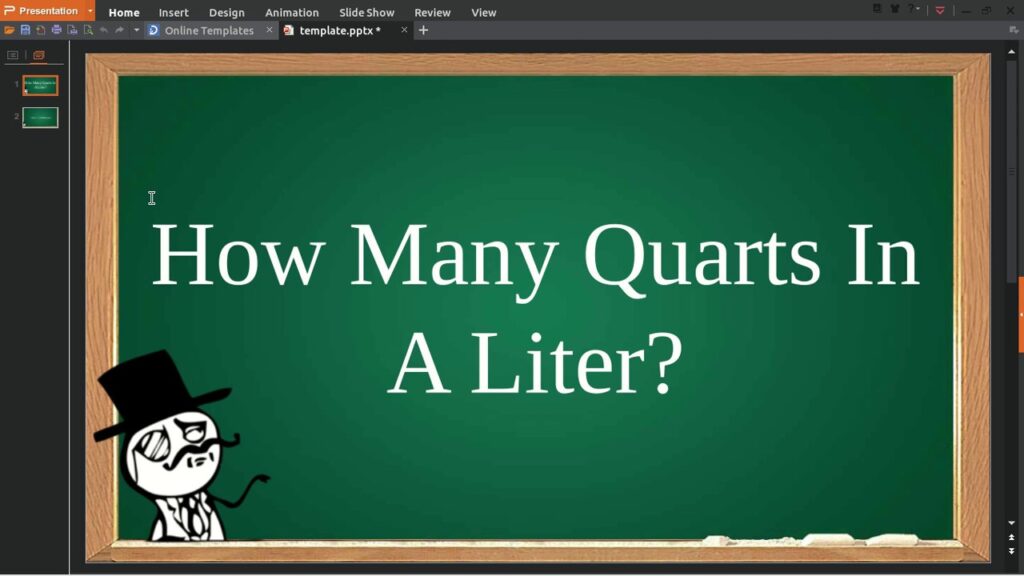How Many Quarts in a Liter? A Comprehensive Guide
Understanding measurements is essential in cooking, baking, and various scientific applications. One common question that arises is how many quarts are in a liter. This article will explore the conversion between liters and quarts, the importance of accurate measurements, and provide practical examples to help you understand this conversion better.
1. Understanding the Basics of Volume Measurement
Volume is a measure of the amount of space that a substance (solid, liquid, gas) occupies. Different regions of the world use different measurement systems, which can lead to confusion when converting between units.
1.1 Metric vs. Imperial Systems
- Metric System: The metric system is used by most countries around the world and is based on units of ten. The liter (L) is the standard unit of volume in the metric system.
- Imperial System: The imperial system is primarily used in the United States and includes units such as quarts, gallons, and pints. The quart (qt) is a common unit of volume in this system.
1.2 Definitions of Liters and Quarts
- Liter: A liter is defined as the volume of a cube that measures 10 centimeters on each side. It is equivalent to 1,000 cubic centimeters (cc) or 1,000 milliliters (ml).
- Quart: A quart is a unit of volume that is equal to one-fourth of a gallon. In the U.S. customary system, 1 quart is approximately 0.946 liters.
2. Conversion Between Liters and Quarts
To convert between liters and quarts, it is important to know the conversion factors:
- 1 liter = 1.05668821 quarts (U.S.)
- 1 quart (U.S.) = 0.946352946 liters
2.1 Conversion Formula
To convert liters to quarts, you can use the following formula:
To convert quarts to liters, use this formula:
2.2 Example Conversions
- Example 1: Convert 2 liters to quarts.
- Example 2: Convert 3 quarts to liters.
3. Importance of Accurate Measurements
Accurate measurements are crucial in various fields, including cooking, baking, chemistry, and engineering. Here are some reasons why precision matters:
3.1 Cooking and Baking
In cooking and baking, precise measurements ensure that recipes turn out as intended. Incorrect measurements can lead to imbalanced flavors, textures, and overall results.
3.2 Scientific Experiments
In scientific experiments, accurate measurements are essential for reproducibility and validity. Small errors in volume can lead to significant discrepancies in results.
3.3 Industrial Applications
In industrial settings, precise measurements of liquids and gases are crucial for processes like mixing, blending, and quality control.
4. Practical Applications of Liters and Quarts
Understanding the conversion between liters and quarts can be helpful in various practical situations:
4.1 Cooking and Recipes
When following recipes, especially those from different countries, you may encounter measurements in liters or quarts. Knowing how to convert between these units can help you accurately prepare meals.
4.2 Beverage Industry
In the beverage industry, understanding volume measurements is essential for packaging and distribution. Many beverages are sold in liters, while others may be measured in quarts.
4.3 Automotive and Engineering
In automotive and engineering applications, fluids such as oil and coolant are often measured in quarts or liters. Accurate measurements are vital for proper maintenance and operation.
5. Summary of Key Points
- 1 liter is approximately 1.05668821 quarts.
- 1 quart is approximately 0.946352946 liters.
- Accurate measurements are crucial in cooking, baking, scientific experiments, and industrial applications.
6. Frequently Asked Questions (FAQ)
How many quarts are in a liter?
There are approximately 1.05668821 quarts in a liter.
How do I convert liters to quarts?
To convert liters to quarts, multiply the number of liters by 1.05668821.
How do I convert quarts to liters?
To convert quarts to liters, multiply the number of quarts by 0.946352946.
Why is accurate measurement important?
Accurate measurement is important for ensuring consistent results in cooking, baking, scientific experiments, and industrial processes.
Where can I find more information about volume measurements?
For more information, you can refer to the Wikipedia page on Volume.
7. Detailed Breakdown of Volume Measurements
Understanding volume measurements is not just about knowing how many quarts are in a liter; it involves a broader comprehension of various units and their applications. Here’s a deeper look into different volume measurements used around the world.
7.1 Common Volume Units
In addition to liters and quarts, there are several other units of volume measurement that are commonly used:
- Milliliters (ml): A milliliter is one-thousandth of a liter. It is often used in medicine and cooking for precise measurements.
- Conversion: 1 liter = 1000 milliliters.
- Cubic centimeters (cc): This is another metric unit equivalent to milliliters. It is commonly used in medical dosages and automotive applications.
- Conversion: 1 cc = 1 ml = 0.001 liters.
- Pints: A pint is a unit of volume that is commonly used in the United States and the United Kingdom.
- Conversion: 1 U.S. pint = 0.473 liters, and 1 U.K. pint = 0.568 liters.
- Gallons: A gallon is a larger unit of volume, often used for liquids.
- Conversion: 1 U.S. gallon = 3.785 liters, and 1 U.K. gallon = 4.546 liters.
7.2 Understanding the Differences in Measurement Systems
The differences between the metric and imperial systems can lead to confusion, especially when recipes or instructions switch between units. Here’s a breakdown of how these systems differ:
Metric System
- Base 10: The metric system is based on powers of ten, making conversions straightforward. For example, moving from milliliters to liters simply involves moving the decimal point.
- Standardization: The metric system is used internationally, which helps in scientific communication and trade.
Imperial System
- Non-Decimal: The imperial system does not follow a consistent decimal format, which can complicate conversions. For example, there are 16 ounces in a pint, but 2 pints in a quart, and 4 quarts in a gallon.
- Regional Use: The imperial system is primarily used in the United States, which can lead to discrepancies in recipes and measurements when compared to metric-using countries.
7.3 Practical Applications of Volume Measurements
Understanding volume measurements is essential in various fields, including:
7.3.1 Cooking and Baking
In cooking, precise measurements can mean the difference between a successful dish and a culinary disaster. Here are some practical applications:
- Recipe Adjustments: If a recipe calls for 2 liters of broth and you only have a quart measuring cup, knowing the conversion helps you adjust accordingly.
- Scaling Recipes: When scaling recipes up or down, accurate conversions ensure that the proportions remain consistent.
7.3.2 Science and Medicine
In scientific experiments and medical dosages, precision is critical. Here’s how volume measurements are applied:
- Laboratory Measurements: Chemists often measure liquids in milliliters and liters for experiments. Accurate measurements are crucial for reactions and results.
- Medication Dosages: In healthcare, dosages are frequently measured in milliliters. Understanding conversions helps healthcare professionals administer the correct amounts.
7.3.3 Industry and Manufacturing
In industrial applications, volume measurements are essential for quality control and production processes:
- Fluid Measurements: Industries that deal with liquids, such as food and beverage manufacturing, require precise measurements for consistency and quality.
- Chemical Manufacturing: Accurate volume measurements are vital in mixing chemicals to ensure safety and effectiveness.
Summary Table
| Measurement Type | Conversion Factor |
|---|---|
| 1 liter | 1.05668821 quarts (U.S.) |
| 1 quart (U.S.) | 0.946352946 liters |
In conclusion, understanding how many quarts are in a liter is essential for accurate measurements in cooking, baking, and various scientific applications. By mastering these conversions, you can enhance your skills in the kitchen and ensure precision in your work.



